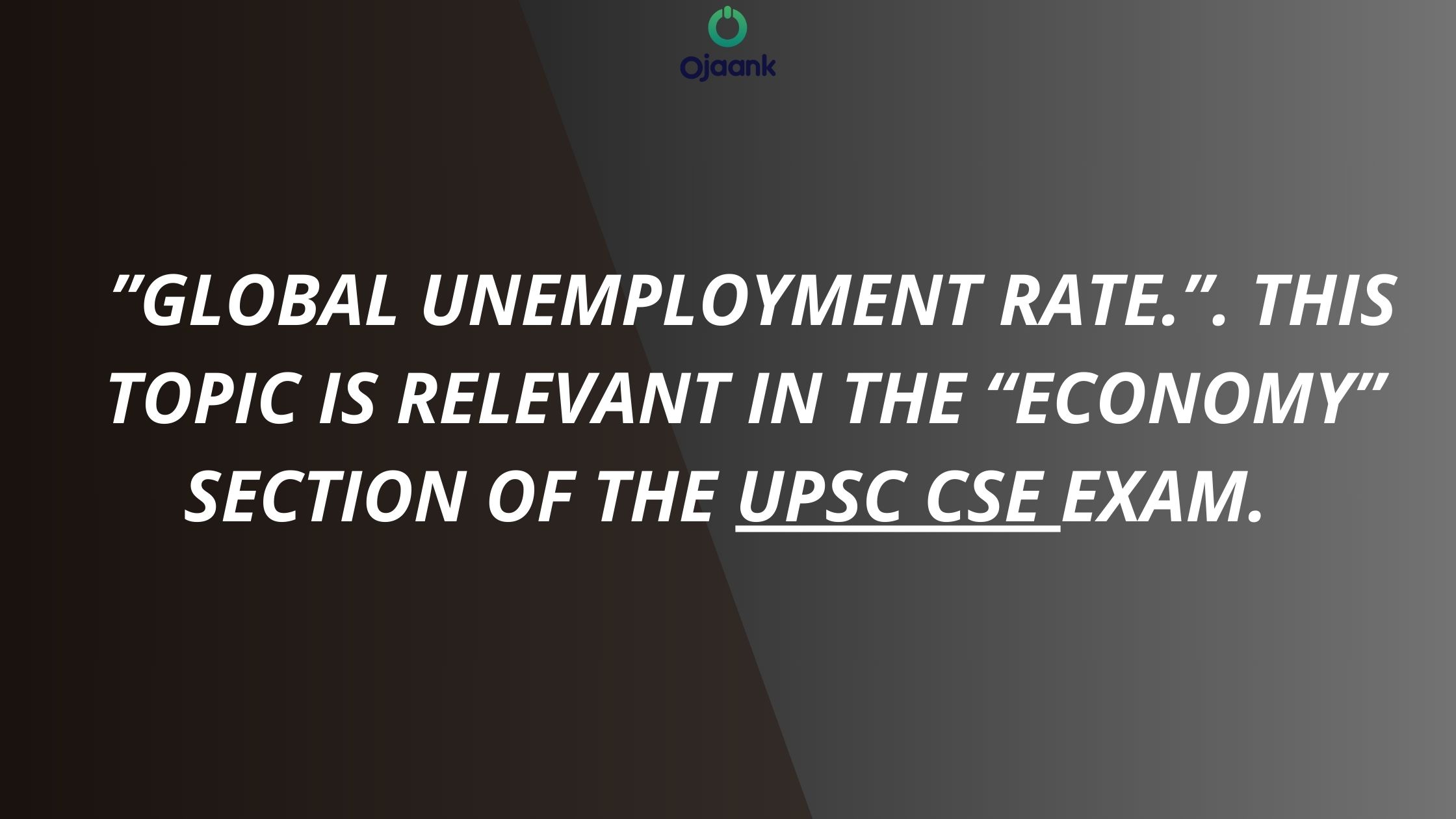Analyzing the Global Unemployment Rate: Trends, Challenges, and Solutions for a Sustainable Future.

1. Overview of Global Unemployment Rates
Unemployment is a pressing issue that affects millions of people worldwide, with far-reaching social and economic
consequences. In recent years, the global unemployment rate has fluctuated, influenced by a myriad of factors such
as technological advancements, economic downturns, and shifts in labor market demand.
In order to address this complex issue, it is crucial to analyze the trends, challenges, and potential solutions for creating
a sustainable future with reduced unemployment rates. This blog delves deep into the global unemployment landscape,
examining key trends, identifying challenges, and proposing actionable solutions to combat this issue and foster a more
inclusive and prosperous world for all.
2. Trends in Global Unemployment Rates
Examining the trends in global unemployment rates provides crucial insights into the current state of the labor market worldwide.
Over the past decade, we have witnessed fluctuations in unemployment rates due to various factors, including economic instability,
demographic shifts, and technological advancements. Understanding these trends is essential for policymakers, businesses, and
individuals to develop targeted strategies that can mitigate the impacts of unemployment and promote sustainable employment
opportunities. By delving into the data behind these trends, we can uncover patterns, disparities, and potential areas for intervention
to create a more resilient and inclusive workforce for the future.
3. Challenges Faced by Countries in Addressing Unemployment
Addressing unemployment on a global scale poses significant challenges for countries around the world. One of the key hurdles is the
mismatch between the skills demanded by the job market and those possessed by the workforce. Additionally, economic recessions,
political instability, and external shocks can further exacerbate unemployment rates. Tackling issues such as informal labor, gender disparities,
and youth unemployment also present formidable obstacles. Moreover, technological advancements and automation bring about the need for
reskilling and upskilling, requiring proactive measures from both governments and industries. Navigating these challenges effectively
is essential for creating a sustainable future with widespread access to quality employment opportunities.
4. Solutions for Achieving Sustainable Employment
In order to address the complex challenges of global unemployment, proactive solutions must be implemented.
Governments can play a crucial role by investing in education and training programs that align with the evolving needs of the job market.
Encouraging entrepreneurship and innovation can stimulate job creation and economic growth. Furthermore, fostering a supportive business
environment and promoting workforce diversity are essential steps towards reducing unemployment rates. Collaborative efforts between
governments, industries, and educational institutions are vital to bridge the skills gap and facilitate sustainable employment opportunities for all
By prioritizing these solutions, we can pave the way for a more inclusive and prosperous future for individuals worldwide.
5. Importance of Education and Skill Development
Education and skill development play a pivotal role in equipping individuals with the capabilities needed to thrive in today's competitive job market.
Investing in quality education and continuous training programs is critical for preparing individuals to meet the evolving demands of various industries. By focusing on developing relevant technical and soft skills, individuals can enhance their employability and adaptability to changing job requirements. Moreover, promoting lifelong learning and upskilling initiatives can empower individuals to stay relevant and competitive in the workforce. Emphasizing the sig
6. Collaboration between Governments, Businesses, and NGOs
Collaboration between governments, businesses, and non-governmental organizations (NGOs) is essential in tackling the complex issue of global
unemployment. Governments can create policies that support workforce development, job creation, and economic growth. Businesses play a crucial
role in offering training programs, internships, and job opportunities. NGOs can provide resources for skill enhancement and career guidance for marginalized
communities. By working together, these stakeholders can align their efforts to address the root causes of unemployment, bridge skill gaps,
and promote inclusive economic development. This collaborative approach fosters a sustainable future where individuals have equal access
to opportunities for growth and prosperity.
7. Conclusion and Call to Action for a Sustainable Future.
In conclusion, addressing global unemployment requires a collaborative effort from governments, businesses, and NGOs. By aligning their
initiatives and resources, these stakeholders can create a more sustainable future with equal opportunities for all. It's crucial for policymakers
to enact supportive policies, businesses to provide training and job opportunities, and NGOs to offer skill enhancement programs for marginalized groups. This holistic approach can bridge skill gaps, reduce unemployment rates, and promote inclusive economic development worldwide. It's time for us to take action together and work towards a future where everyone has the chance to thrive and contribute to a prosperous global economy.
Let's join hands and make a difference for a sustainable future.